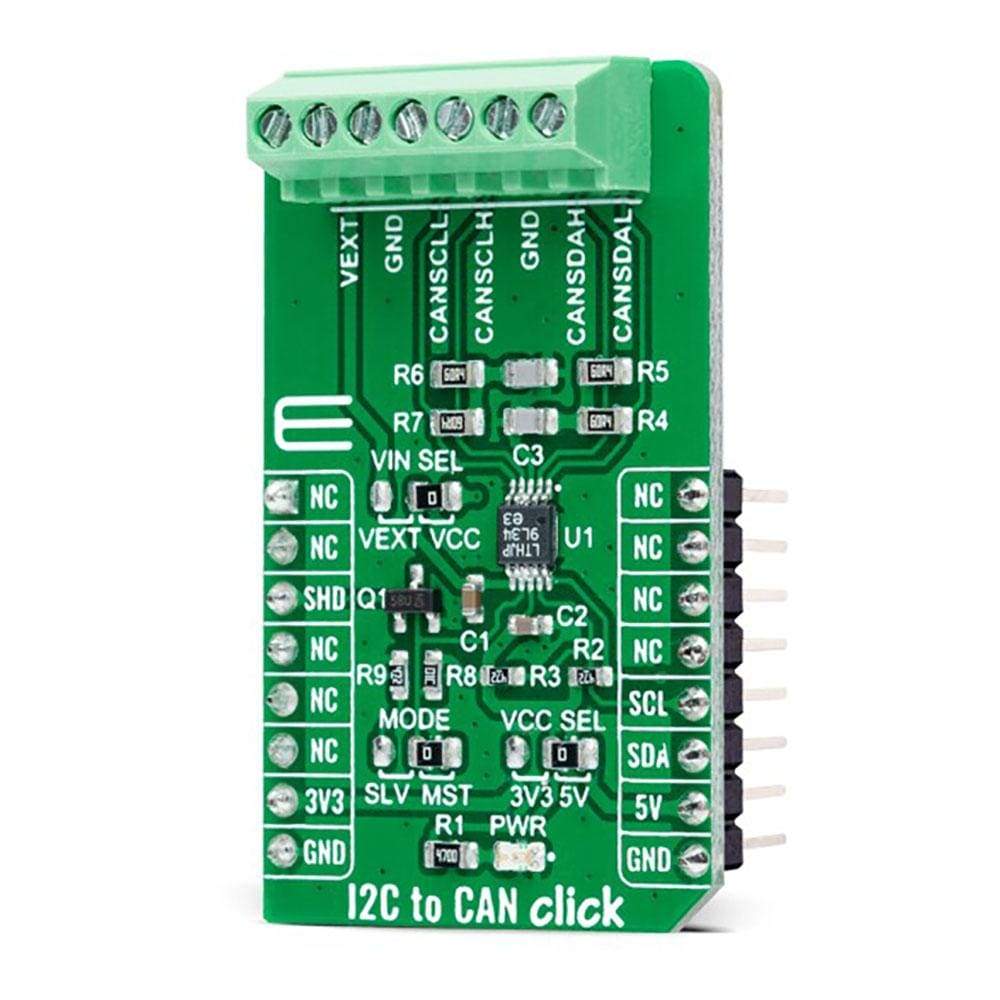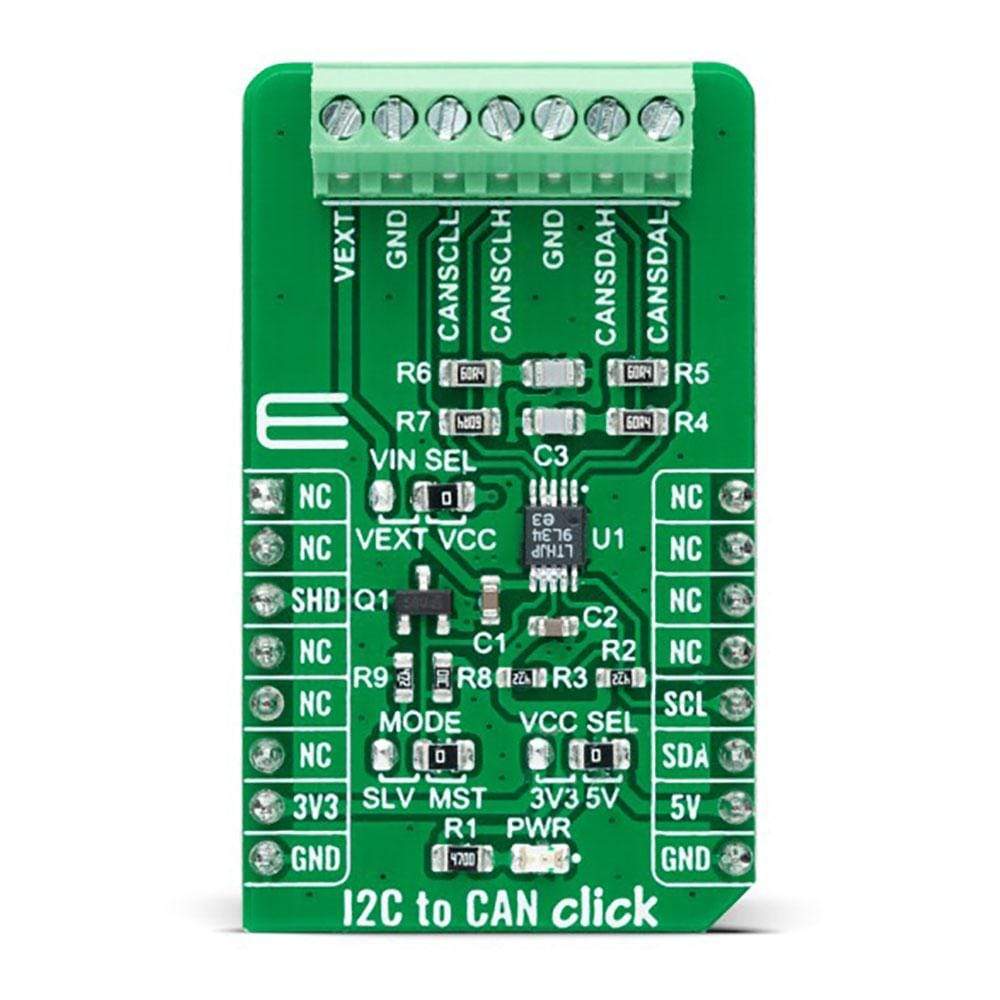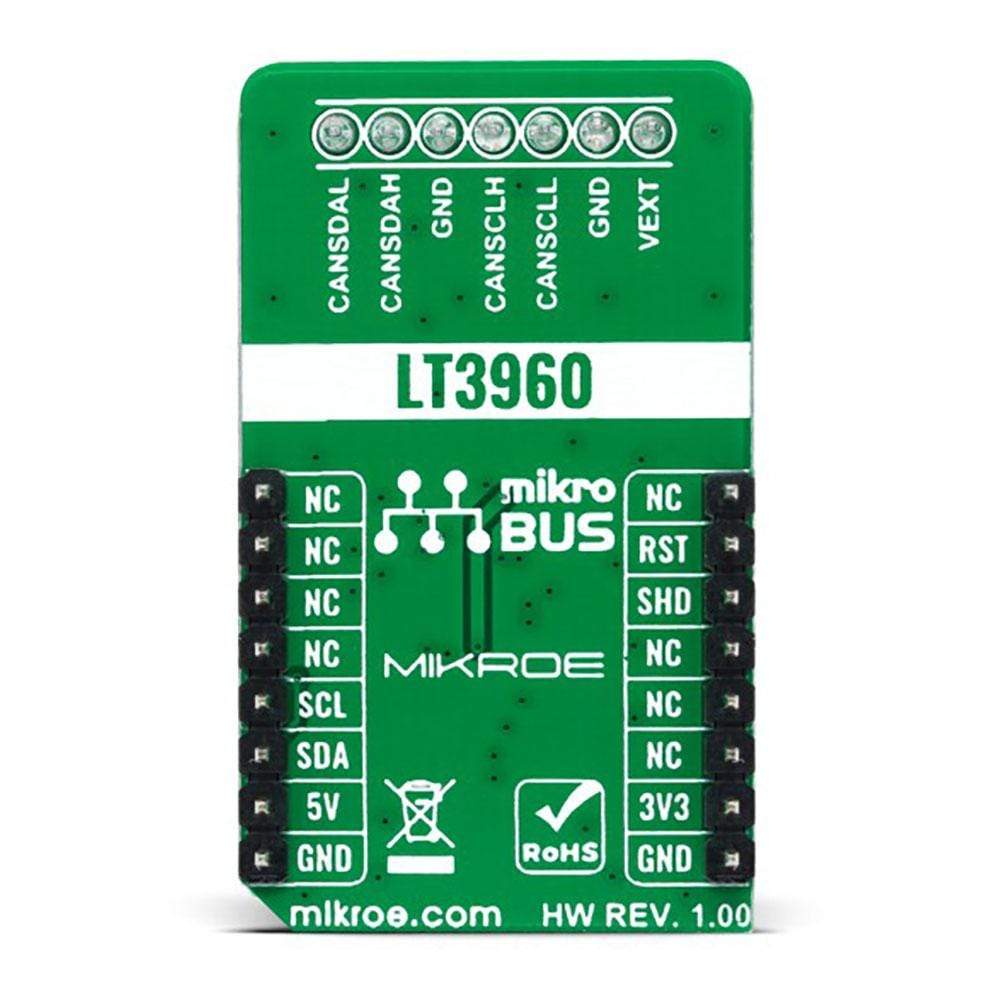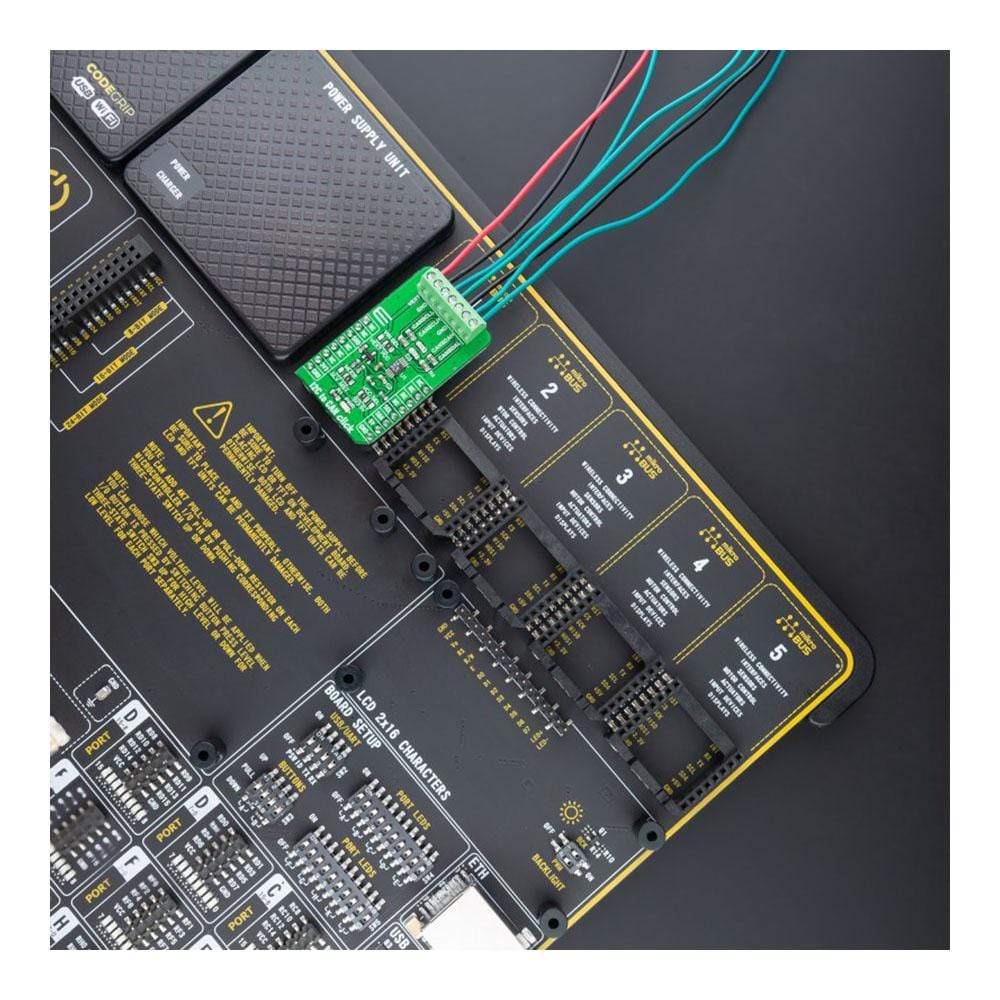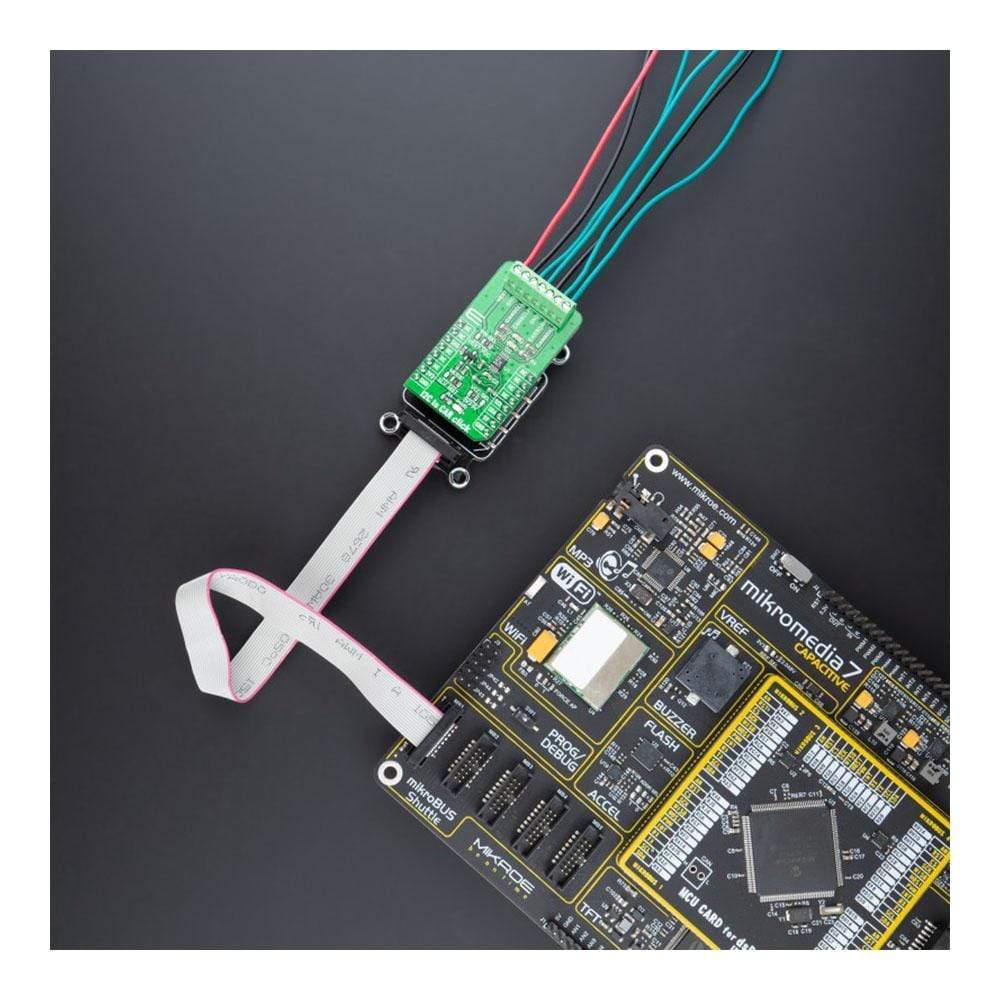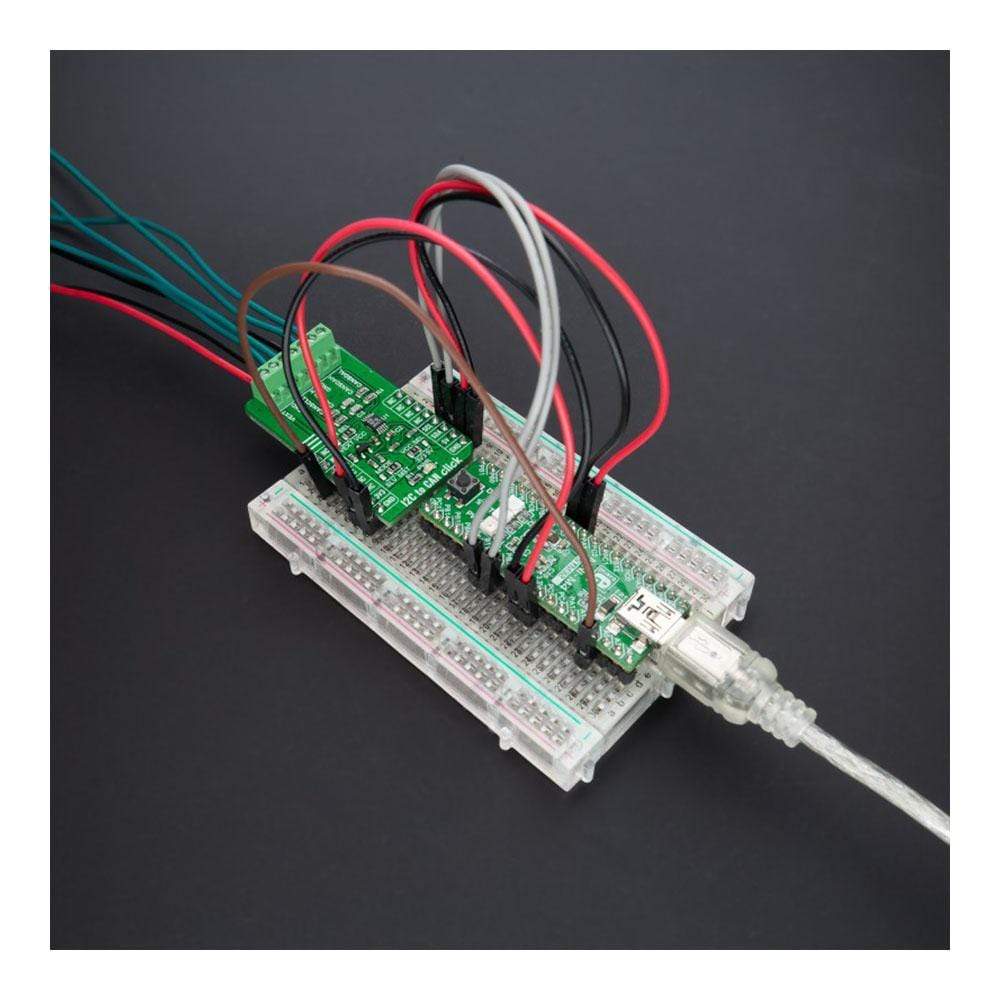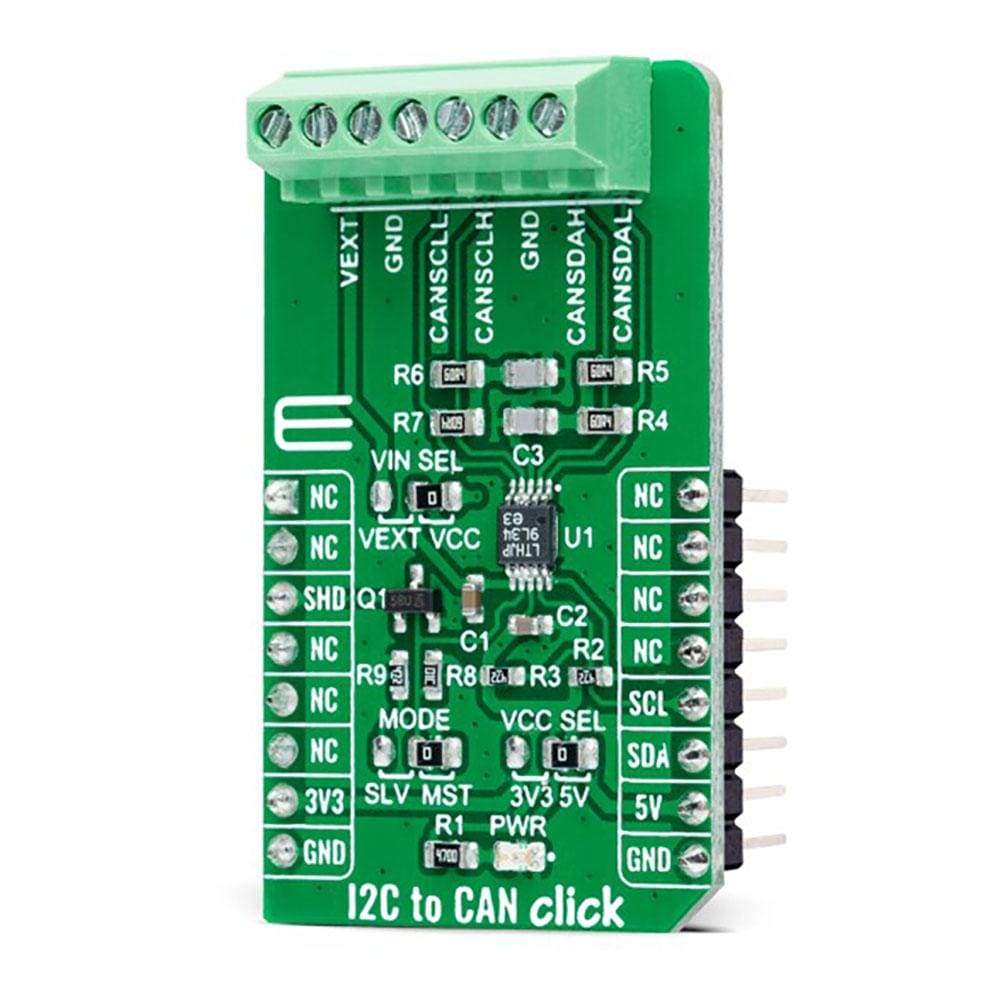
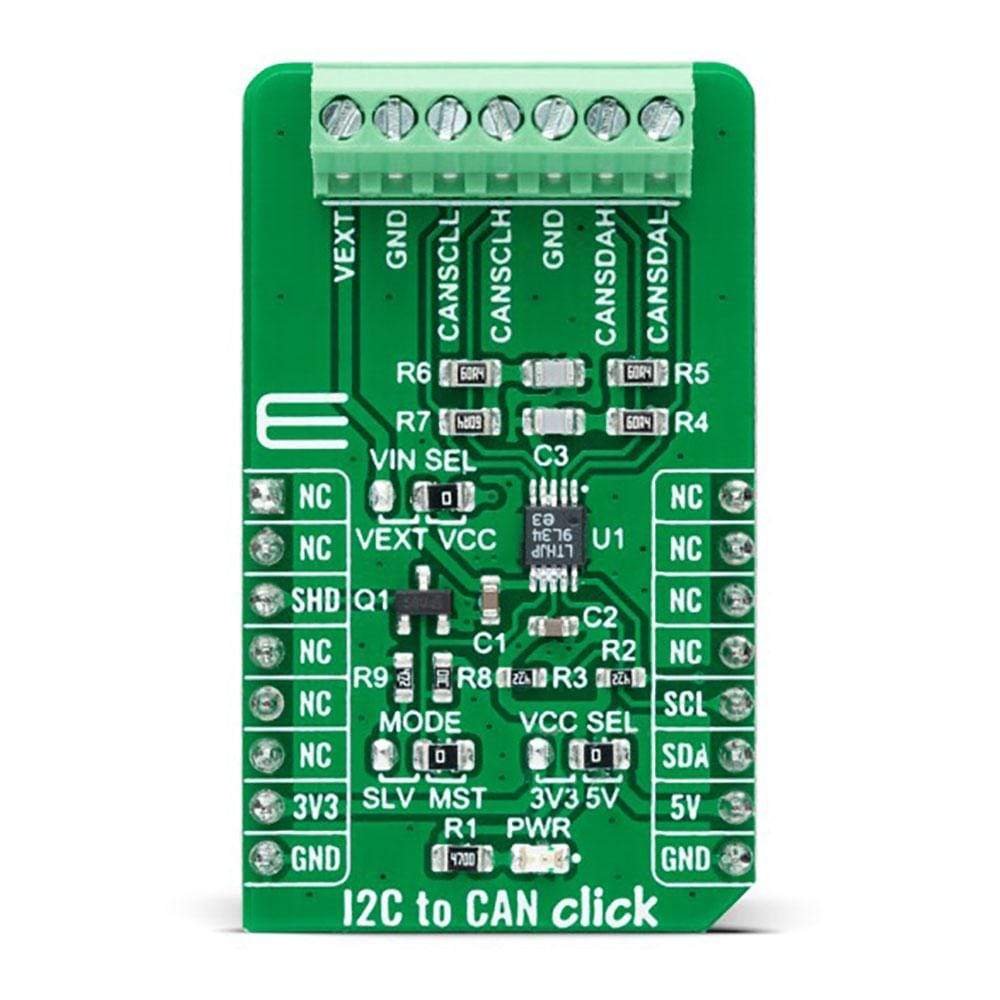
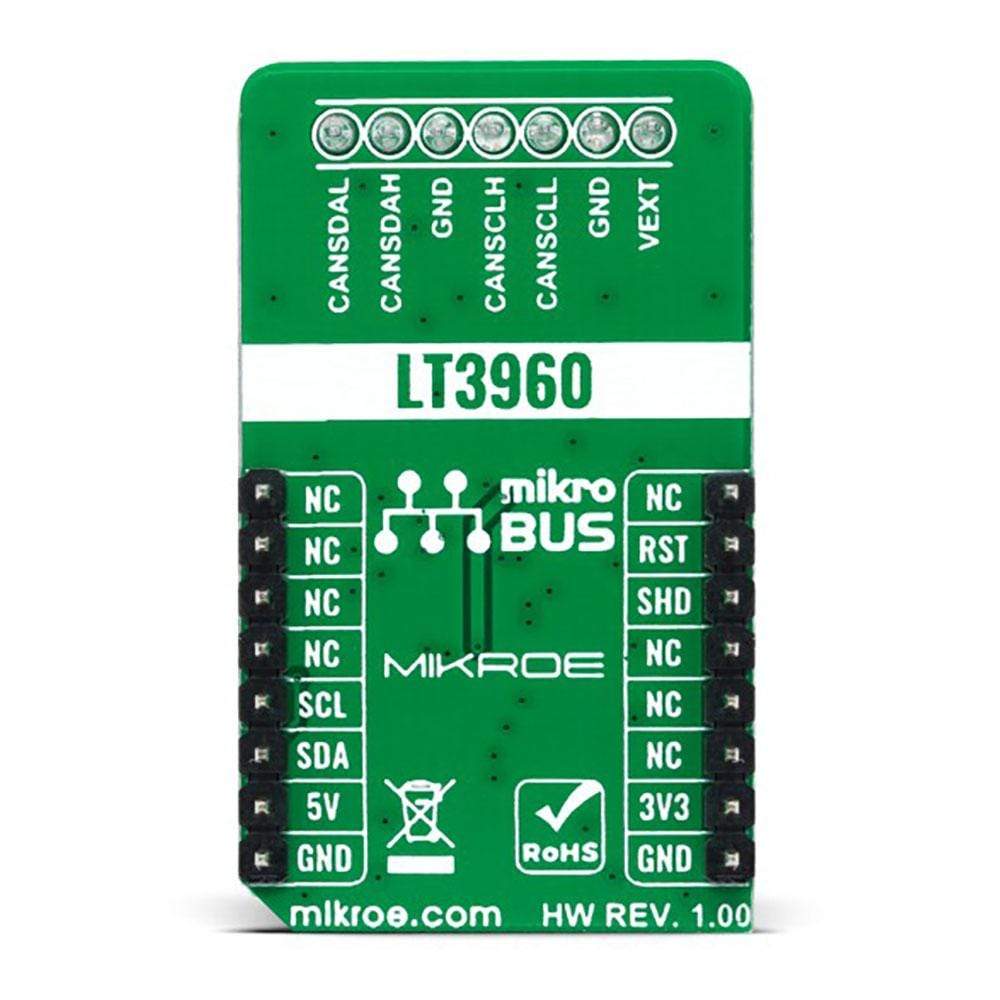
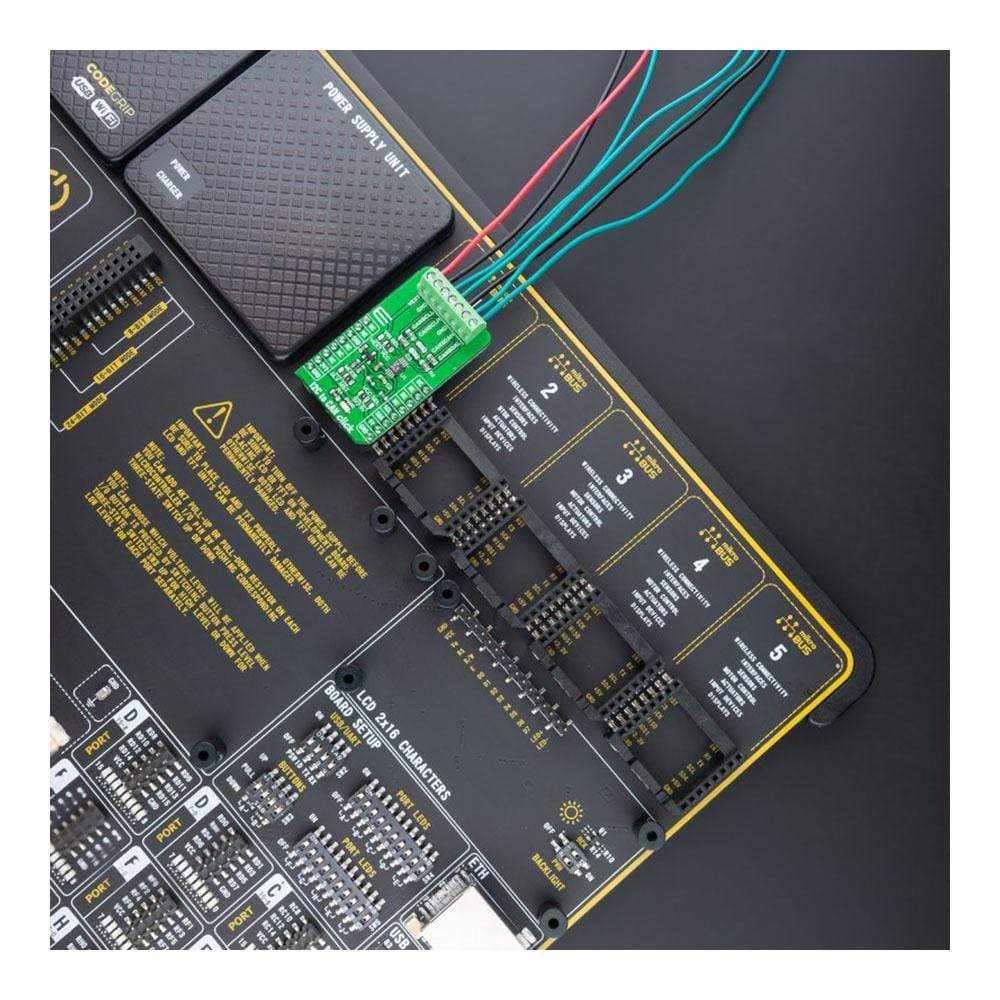
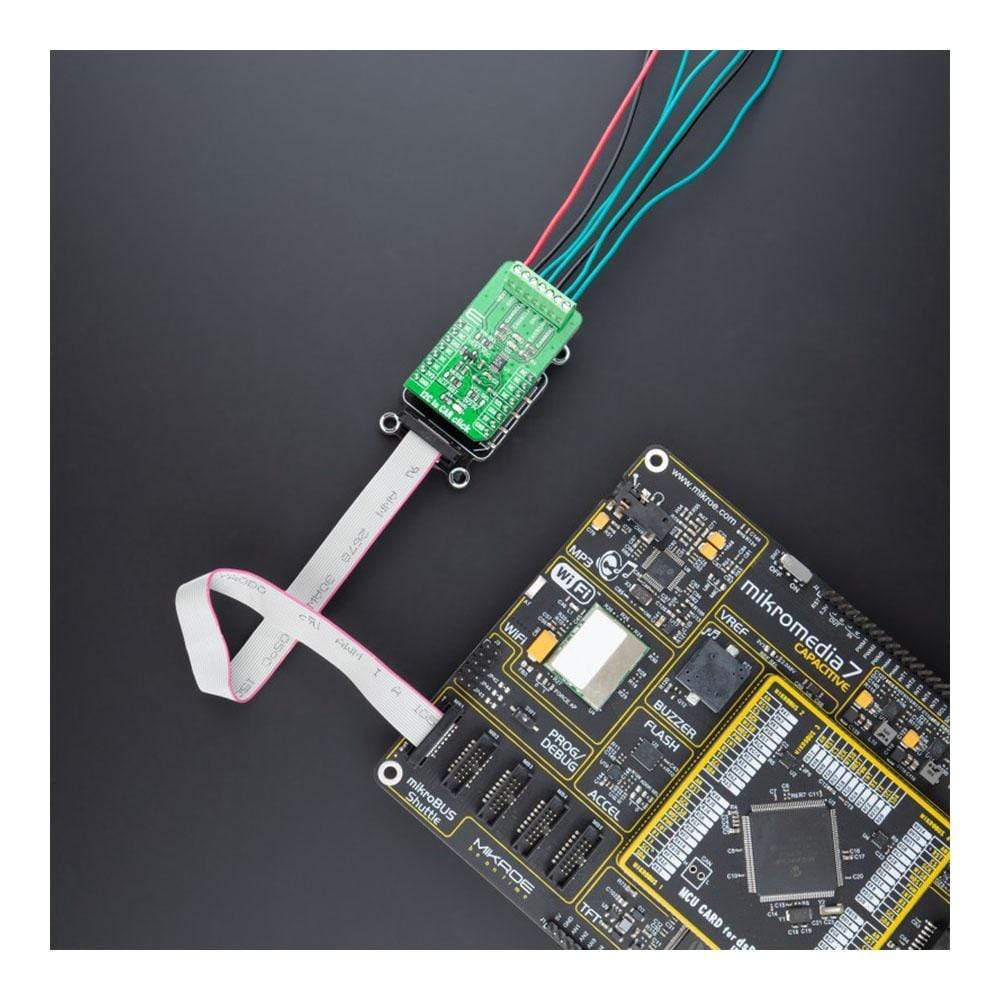
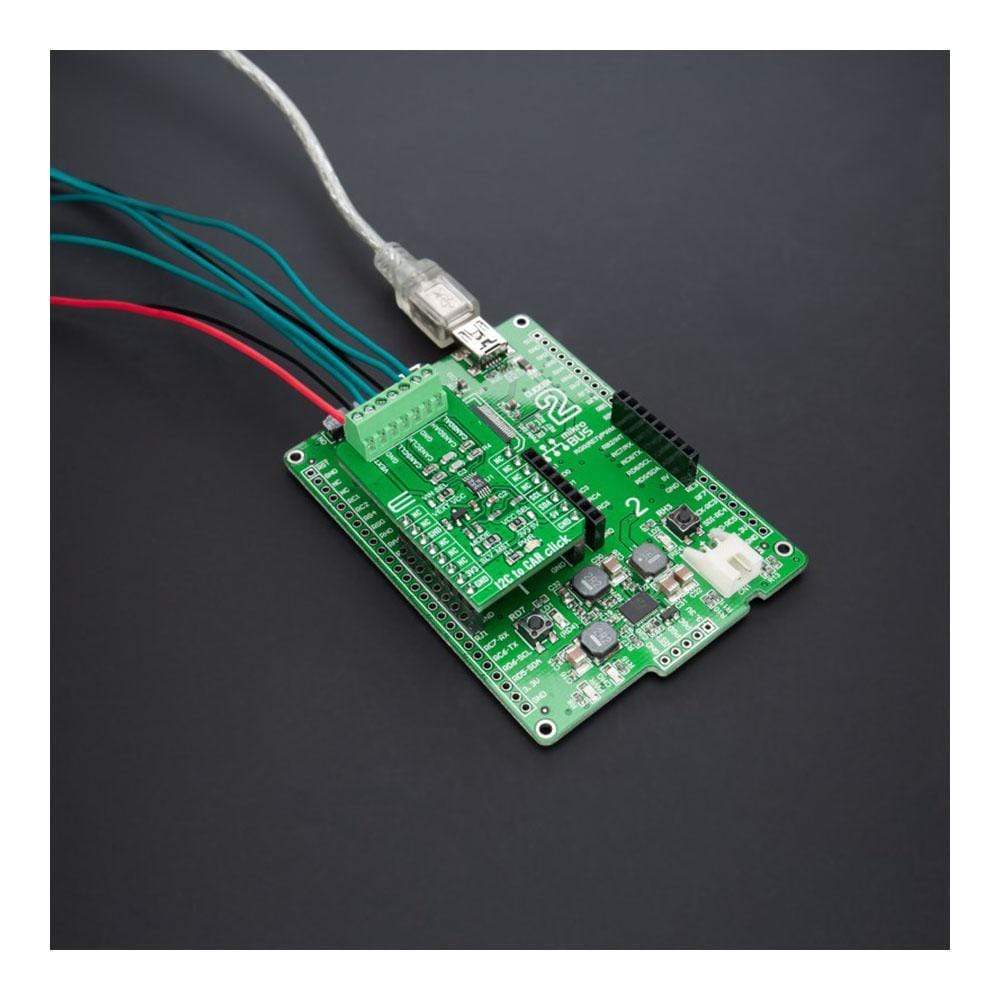
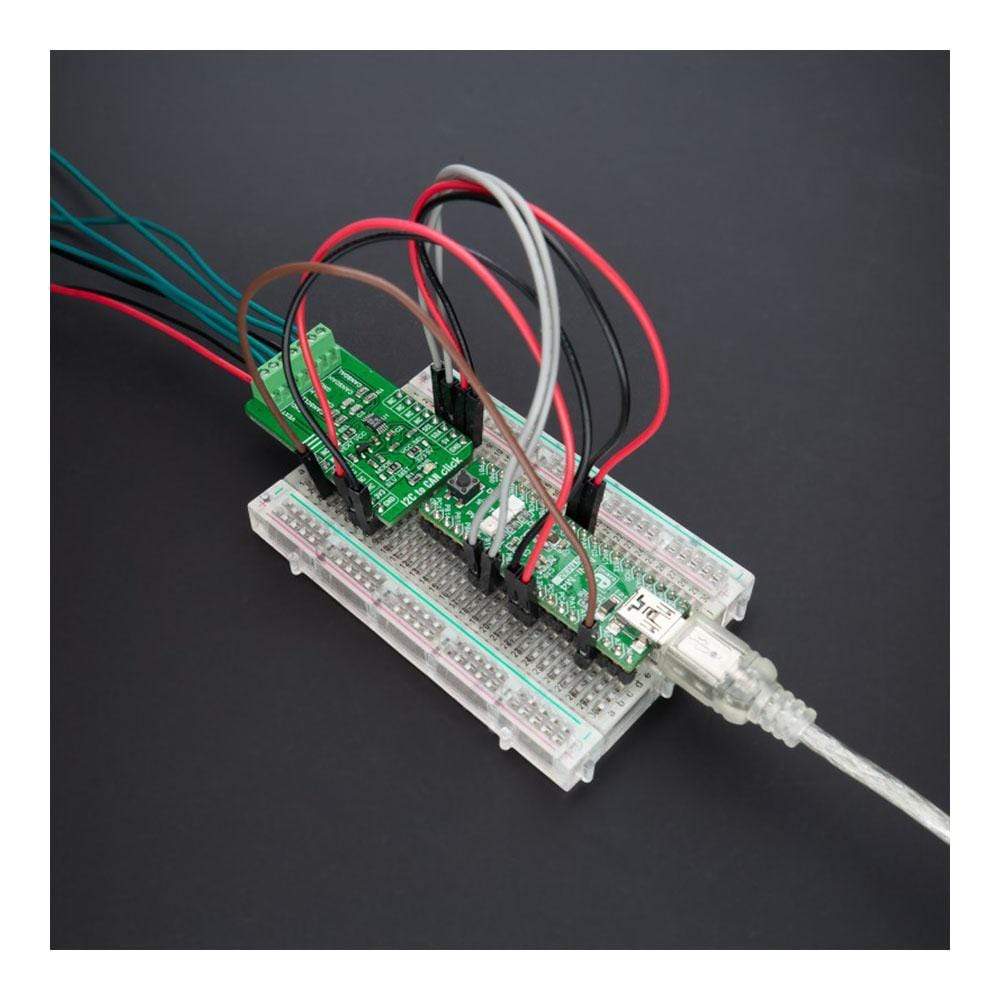
Overview
The I2C to CAN Click Board™ is a compact add-on board that contains I2C to CAN-physical transceiver, which extends a single-master I2C bus through harsh or noisy environments. This board features the LT3960, a robust high-speed transceiver that extends a single-master I2C bus up to 400kbps using the CAN-physical layer from Analog Devices. One LT3960 from SCL and SDA I2C lines creates equivalent differential buses (CAN) on two twisted pairs, while the second LT3960 recreates the I2C bus locally for any slave I2C devices on the other end of the twisted pairs. A built-in 3.3V LDO powers the I2C and CAN lines from a single input supply from 4V to 60V.
The I2C to CAN Click Board™ is suitable for industrial and automotive networking, remote sensor applications, and more.
Downloads
La carte Click Board™ I2C to CAN est une carte complémentaire compacte qui contient un émetteur-récepteur I2C vers CAN-physique, qui étend un bus I2C à maître unique dans des environnements difficiles ou bruyants. Cette carte comprend le LT3960, un émetteur-récepteur robuste à grande vitesse qui étend un bus I2C à maître unique jusqu'à 400 kbps en utilisant la couche physique CAN d'Analog Devices. Un LT3960 des lignes I2C SCL et SDA crée des bus différentiels équivalents (CAN) sur deux paires torsadées, tandis que le deuxième LT3960 recrée le bus I2C localement pour tous les périphériques I2C esclaves à l'autre extrémité des paires torsadées. Un LDO 3,3 V intégré alimente les lignes I2C et CAN à partir d'une seule alimentation d'entrée de 4 V à 60 V.
La carte I2C vers CAN Click Board™ convient aux réseaux industriels et automobiles, aux applications de capteurs à distance, etc.
| General Information | |
|---|---|
Part Number (SKU) |
MIKROE-4644
|
Manufacturer |
|
| Physical and Mechanical | |
Weight |
0.02 kg
|
| Other | |
Country of Origin |
|
HS Code Customs Tariff code
|
|
EAN |
8606027382864
|
Warranty |
|
Frequently Asked Questions
Have a Question?
Be the first to ask a question about this.

